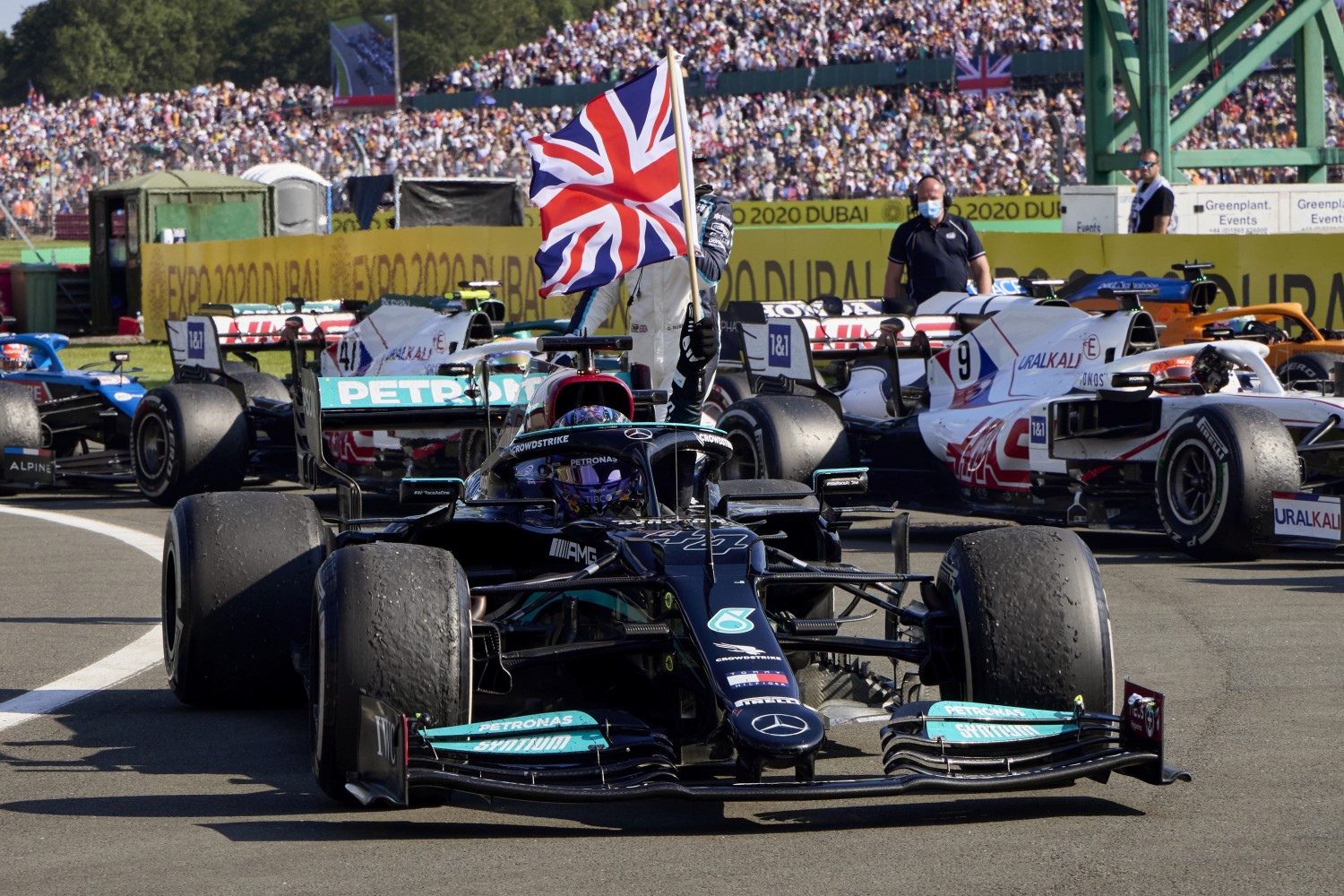F1: British GP at Silverstone Preview
The 2022 F1 Championship season will continue this coming weekend with the British Grand Prix at Silverstone Circuit.
Silverstone is a place that needs no introduction: the British Grand Prix is one of the great races in motorsport, and you feel the meaning of this event from the moment you step through the circuit gates. The fans here are incredible: there’s so many of them, they love the sport and know it so well and there’s a true festival atmosphere from Thursday onwards – it’s contagious.
Max Verstappen and Red Bull will be out for revenge this weekend after Lewis Hamilton ran wide and punted Sprint Race winner Verstappen into the barriers at high speed last year and only received a 10-second penalty for it.
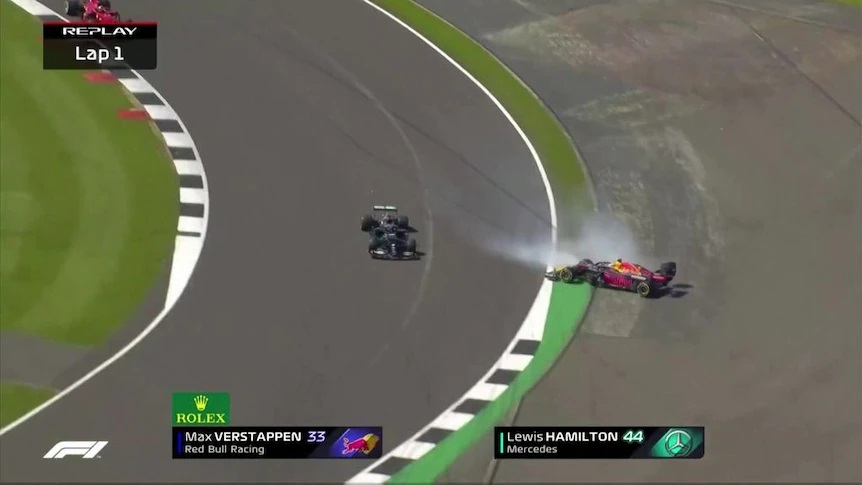
“We’re going there fired up and trying to put right what happened last year,” team principal Christian Horner told Sky Sports underneath the podium in Canada.
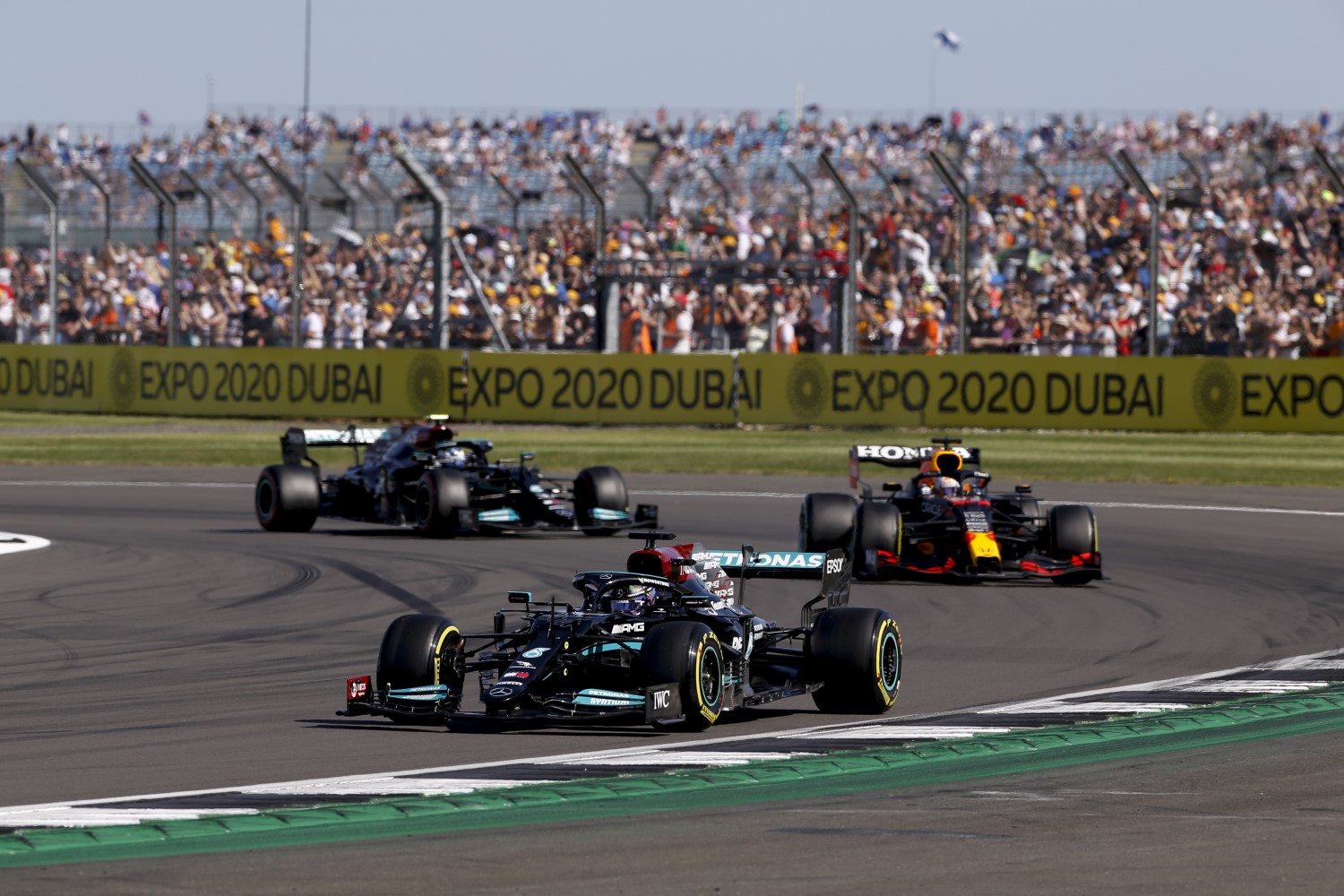
Even as Verstappen celebrated his maiden title triumph in Abu Dhabi last December, chief technical officer Adrian Newey – completely unprompted – brought up his lingering annoyance over the British GP, admitting it “still really grinds with me.”
Rest assured the specter of Silverstone 2021 will never be too far away this weekend…
Where it all began
On the hallowed ground where Alfa Romeo triumphed in 1950, Silverstone is where the journey began for the Formula 1 World Championship, when the converted wartime airfield on the Northamptonshire/Buckinghamshire border hosted the inaugural event on May 13, 1950. Formula 1’s British Grand Prix has been on the calendar every season, and since 1987 it has been held at Silverstone. The majority of the layout remains traceable to the version initially utilized in 1950, though the circuit has evolved to keep pace with modern standards.
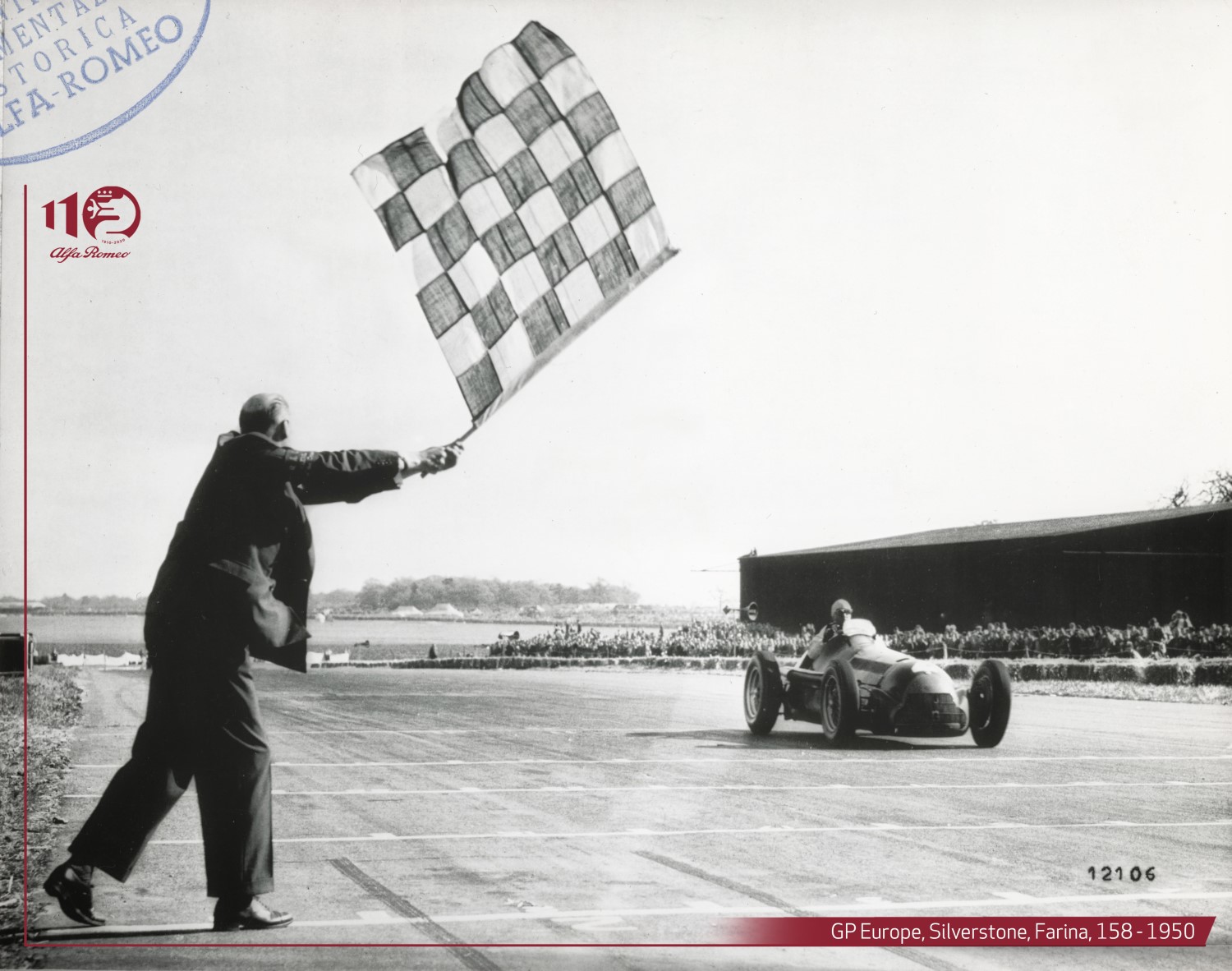
Silverstone is renowned for its fast and flowing layout that provides a stiff test for teams and drivers. Phenomenally fast turns such as Abbey, Copse and the Maggotts/Becketts complex require inch- perfect driving while these high-energy corners also place an extreme stress on tires, particularly the front-left on a clockwise layout. Silverstone has been the scene of countless iconic moments throughout Formula 1 history, with shock moments, surprise victors and scintillating side-by-side racing. The traditional British summer can also have an influence on proceedings and provide opportunities.
The track is characterized by its high-speed corners and regular short straights, and the exposed Silverstone site means that the wind can have a dramatic and often unpredictable effect on the cars.
Many teams are bringing chassis and aero upgrades for this event including Mercedes, Ferrari, Williams, Alfa Tauri, Alpine and Aston Martin. With next week’s race in Austria being a Sprint Event, they will be looking to get as much learning done this weekend as possible.
Race Insight
Tires: Despite Pirelli bringing compounds two steps harder than the previous three events, the high degradation expected means that long stints on the Hard compound are likely. Recent races have often been completed using a one- or two-stop strategy.
Overtaking: Cars of similar pace tend to end up in DRS trains around Silverstone, with 63% of overtakes assisted by the device. High-speed corner entries and windy conditions further add to the difficulty of passing – although particular attention will be paid to whether ground-effect can improve the situation this year.
Safety Cars: Silverstone has a high rate of Safety Car deployment, with each British GP featuring at least one since 2014. The timing of these could play a crucial role in the strategy of the race – especially with such a relatively long lap. Virtual Safety Cars are rare, however: just one has been used since its introduction in 2015.
Downforce: These new cars are known for getting an increase in downforce, the quicker they go so that means usually that the quicker corners should behave a bit differently compared to last year. Therefore, that section with Maggotts and Becketts will be quite fascinating for the drivers in these new cars.

Fact File: British Grand Prix
- At 5.891km, the Silverstone Circuit is the fourth-longest on the F1 calendar and only Spa-Francorchamps (7.004km), Baku (6.003km) and Jeddah (6.174km) are longer.
- Silverstone’s track layout is legendary and very tough on tires, especially on left-front tires which have huge loads imposed on them in Turns 1, 8, 9, 10, 11, 12 and 15. Suzuka, which will be back on the calendar later this year in early October, puts even greater demands on tires but distributes the loads equally to all four tires, as it is the only track on the calendar in the shape of a figure eight. At Silverstone, putting down the car’s energy is firmly focused on left side tires.
- Brake pads are not put under any great strain around Silverstone’s fast, flowing corners, so the teams like to turn down cooling to the brakes, which is useful for the car’s aerodynamics. However, it can cause problems on the formation lap and behind the safety car when driving at low speeds – we’ve seen brakes catch fire here in the past!
- Maggotts, Becketts, Chapel – Silverstone boasts some of the most iconic names for corners in the whole of motorsport, and it is one of only three tracks in F1 where engineers give names to the corners and not numbers, the other two being Spa-Francorchamps and Monaco.
- Silverstone is a high-speed circuit where teams aim to reduce drag as much as possible. For this reason, we’ll see similar wing settings as those used in Baku and Montreal.
- Cars usually achieve the highest average corner speeds of the year at Silverstone, but that can change from year to year depending on conditions, putting Silverstone in the same bracket as Suzuka.
- Conditions at Silverstone are notoriously windy and changes in wind direction happen quite frequently. That can have a major impact on vehicle balance and completely change the car’s behavior, forcing drivers to adjust driving style accordingly in terms of braking points, speed as they approach the apex of turns and acceleration as they exit.
- Silverstone is the only track on the calendar where drivers will have taken two turns before hitting the brakes for the first time at Village (Turn 3), so the distance from pole position to the first braking zone is some 644 meters. With full tanks at the race start, however, the drivers have to lift after just 225 meters, which creates a bunching-up effect. The opening tussle at Silverstone often continues until Turn 6 and in some cases even further to Copse (T9), which is far more drawn out than on most circuits.
- Drivers complete almost 81% of a lap at full throttle at Silverstone, the third-highest percentage seen so far this season after Australia and Saudi Arabia.
- The famous combination of turns made up of Maggotts, Becketts and Chapel is in quali trim taken at full throttle, with only Turn 13 requiring some light application of the brakes, to shift the load onto the front axle and help steer into the corner.
- That results in tremendous amounts of g-forces being applied to both drivers and cars on this stretch of track. First, there’s a 2g left-hander followed by a 5g right turn, a 5g left turn and a 4g right turn, and finally, a 3g left turn.
- Drivers experience some of the highest lateral g-forces of the season at Silverstone with a maximum of 5.2g at Stowe (Turn 15). To give you some idea of what that means, the average weight of a human head with a helmet is 7kg, so the driver’s neck is being pulled from side to side with a force of 35kg at this point.
- Silverstone is a home race for the team. The Brackley factory is a mere nine miles away and the home of Mercedes AMG High Performance Powertrains at Brixworth is just over 20 miles from the track.
- This can be an advantage when there is a threat of rain, because experienced observers in the Race Support Room at Brackley (wind from the SW) or the Trackside Support Office at Brixworth (wind from the NE) can warn about its intensity and the effect this has on tire choice.
- Although England has a generally temperate climate, the Silverstone weekend often bucks the trend and regularly features among the top three or four hottest races of the year in terms of air temperature.
Unlocking the Lap

Silverstone has several overtaking opportunities: drivers usually make moves up the inside into Brooklands (Turn Six) and Stowe (Turn 15). These are at the ends of the two longest straights and are some of the more common passing places. These are also where the DRS zones are located, and 69% of overtakes in the last five races have occurred here.
There are few heavy braking events, so top speed and mastering key corners such as Luffield (Turn Seven) and Becketts (Turn 14) are critical to lap time. The Loop (Turn Four) is also important to set up an overtake into Brooklands.
Village (Turn Three) and Vale (Turn 16) kick off a sequence of corners, so drivers can get creative at the entry-points to try and force cars off-line or move themselves into a better position by the exits.
Mastering the Lap
Pirelli Tires
- Along with Suzuka in Japan and Spa in Belgium, Silverstone places the highest energy demands on tires all year, which is why the hardest tires in the range have been nominated: C1 as the P Zero White hard, C2 as the P Zero Yellow medium, and C3 as the P Zero Red soft. This is the third time that this combination has been nominated all year.
- Ultra-rapid and high-energy corners such as the Maggotts and Becketts complex aren’t the only challenge that Silverstone has to offer: the weather can be extremely variable, from bright sunshine to heavy rain.
- Last year’s race was won with two tire changes: one of them taking place under an early red flag period following the collision between Lewis Hamilton and Max Verstappen. Nearly all the drivers completed two stints on the medium plus a final one on the hard. This year, the compounds and structures are completely different, and there’s no sprint qualifying either – which was a factor in the strategy last year.
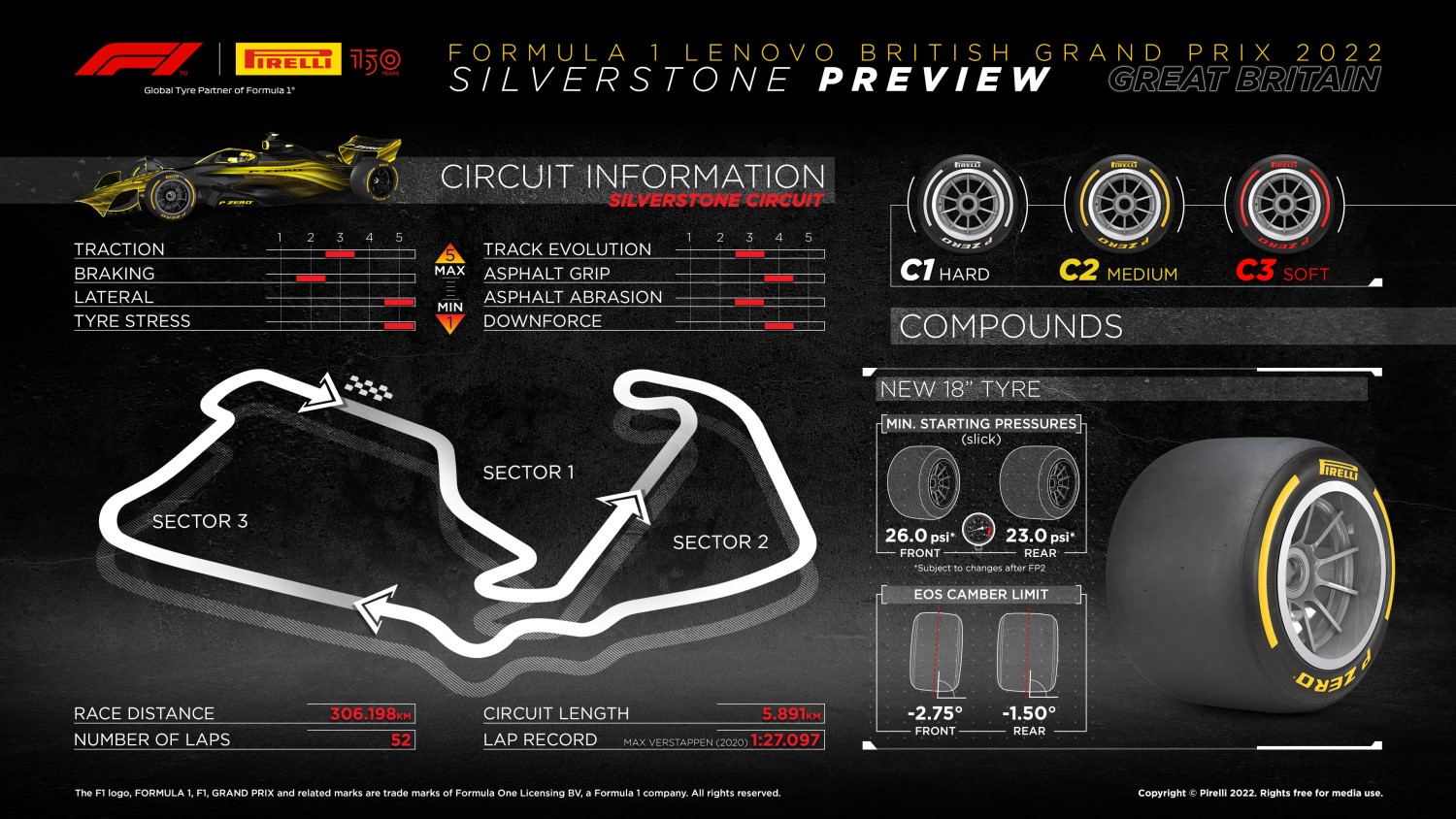
“The British Grand Prix was where the new show car for the 2022 season was displayed last year, to highlight the future direction of the sport that we have embarked on from this season. The latest aerodynamic regulations are designed to allow drivers to follow each other more closely for longer to give more chance of overtaking, as we saw in Canada, while the tires are designed to provide less overheating, more stability, and increased driveability within a wider working window. All these aspects will be tested this weekend, on one of the most challenging tracks for tires of the year.” Mario Isola
